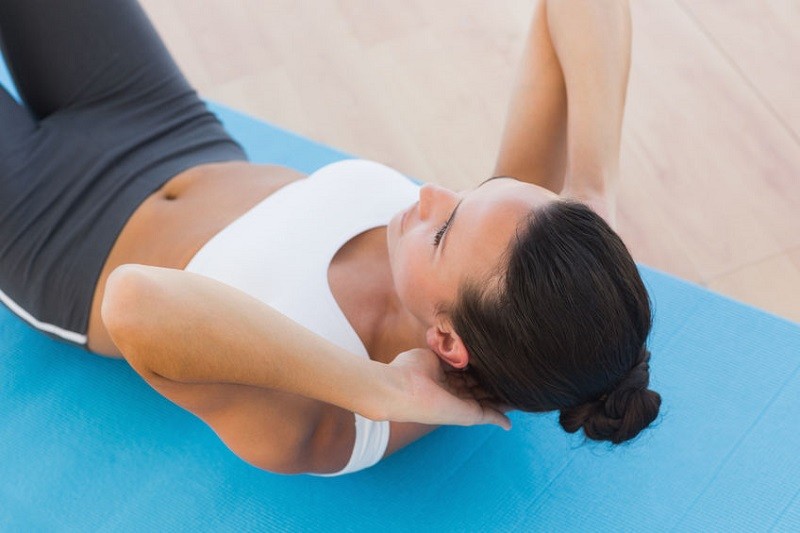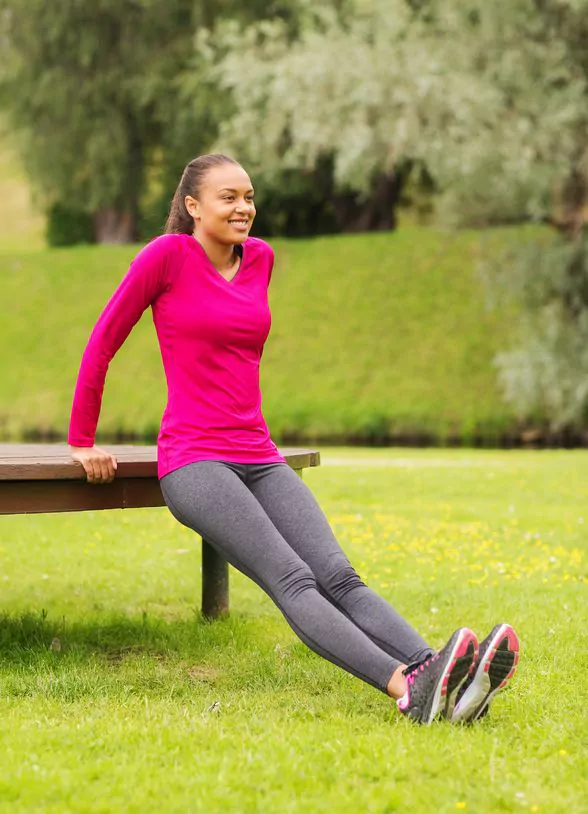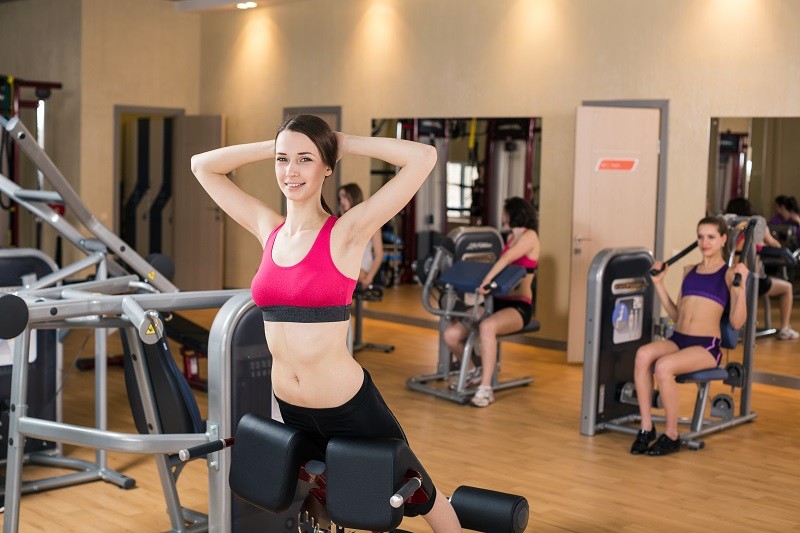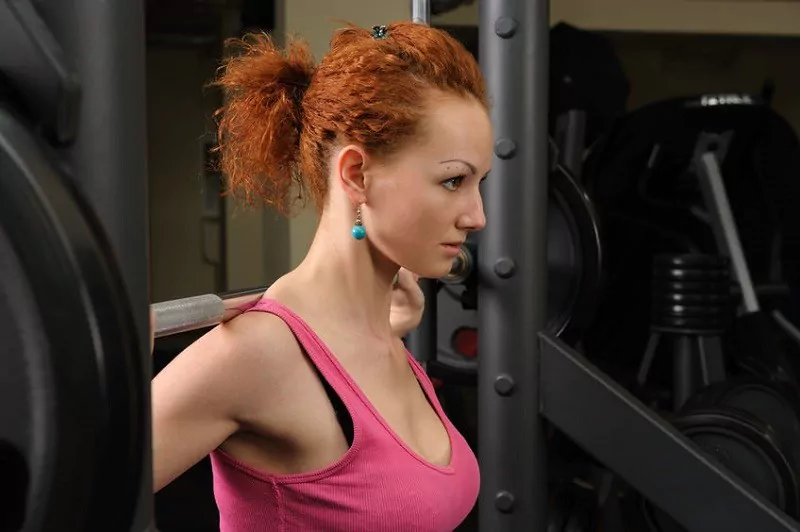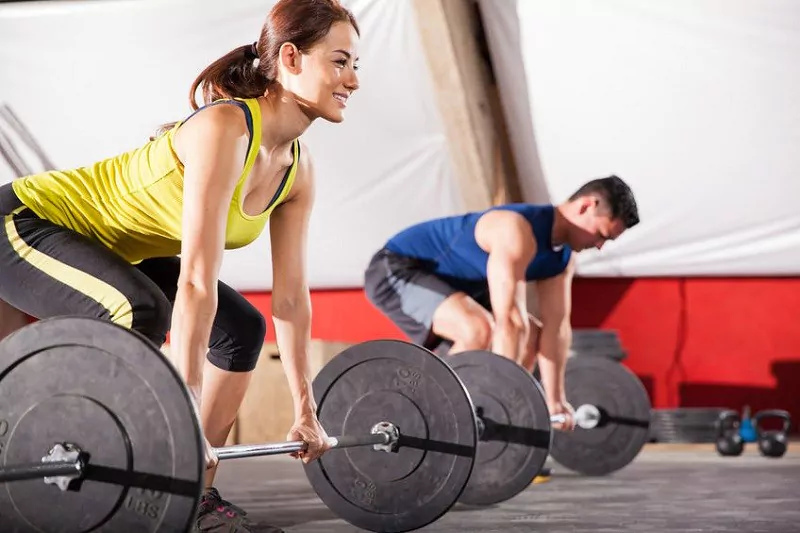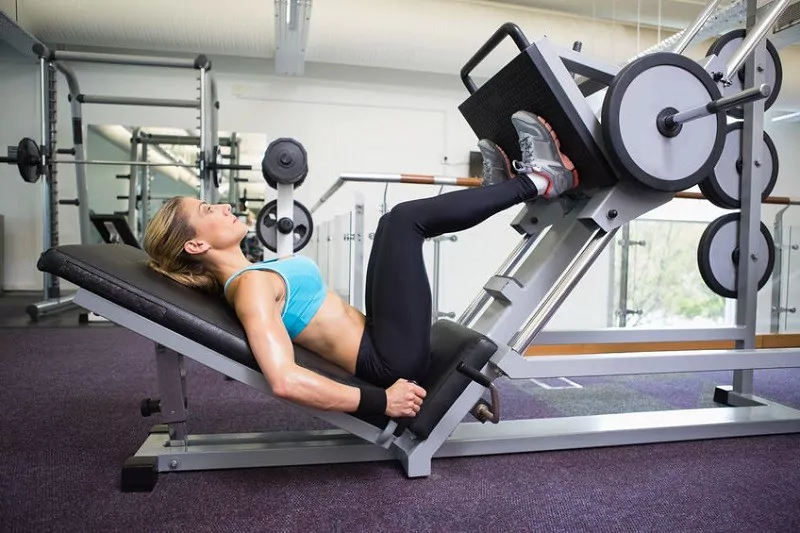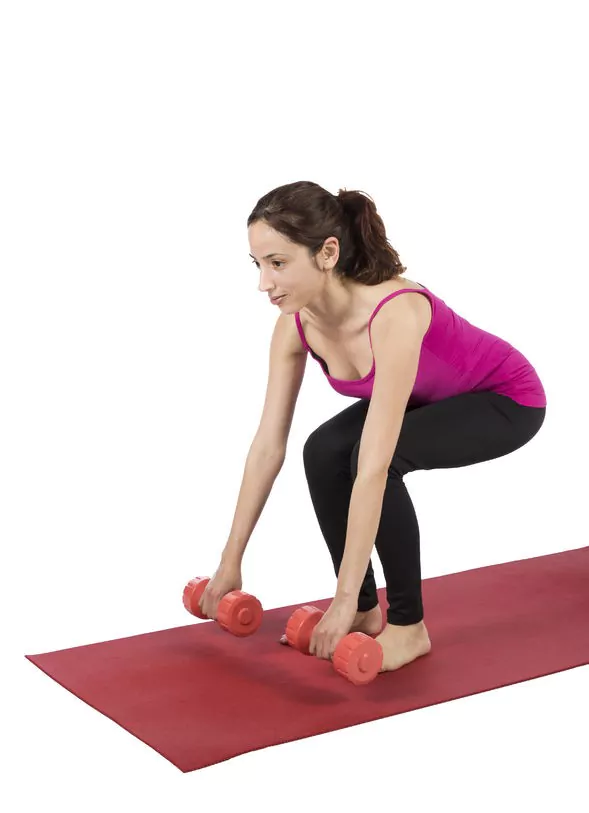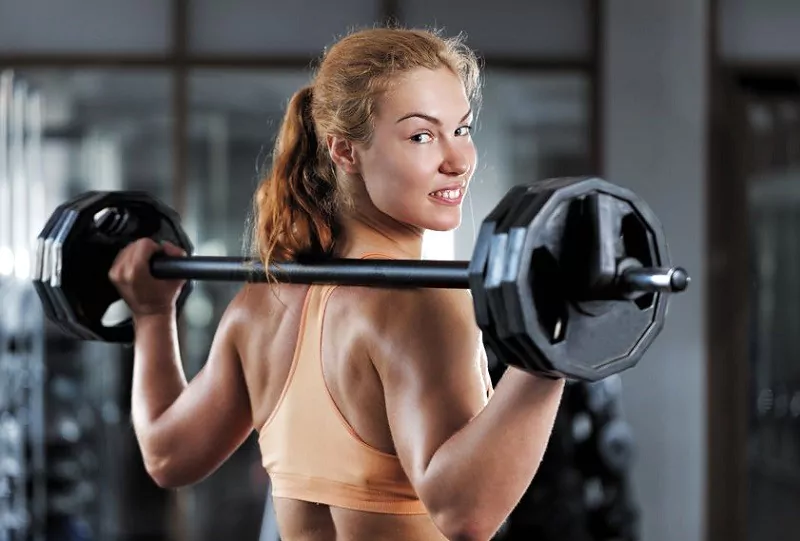8 Most Useless Workouts Ever
Do you take your workouts seriously? Do you have limited time? Do you want to be safe while training? If you answered “yes” to any of the preceding questions, then consider the following. Some exercises, even those that are considered “classic,” simply aren’t worth the time they require and may even be dangerous.
Read on to find out why each of the following exercises can be replaced by a technique that is far more effective and far safer.
1. Crunches on the Floor
Why they’re useless
Traditional crunches aren’t very dynamic because they target only a small group of muscles. What’s worse, crunches can cause serious damage, particularly to the discs in your spine. According to some studies, the stress put on the discs during a crunch is enough to cause herniation (disc rupture).
In fact, crunches put a load on the spine that would never be allowed on the job. Finally, crunches get less effective as your physical condition improves, which means you need to do more of them to get the same benefit. Unfortunately, that also means you have to put more stress on your spine.
Alternatives
If you want great abs, the basic plank is actually one of the best abdominal exercises you can do. It offers a more natural alternative to the crunch and doesn’t stress the spine. To do a plank, put your toes and forearms on the floor with your butt pointing up and your body straight.
The key is to tilt your pelvis and contract your abdominal muscles to keep your butt from sticking up. Hold for 60 seconds and repeat 3-5 times. It sounds easy, but it isn’t.
The basic plank will only get you so far though. For advanced abdominal exercises, consider cable torso twists, the woodchopper, side planks, stability ball planks, and medicine ball side throws. Don’t forget that you should always strike a balance when working out, so remember to strengthen your back muscles along with your abs.
2. The Triceps “Bench” Dip
Why It’s Useless
Professionals now consider the triceps dip and related biceps dip to be contraindicated exercises. That means no one should do them, ever, for any reason. It turns out that these exercises put excessive stress on the rotator cuff muscles, deltoid, bursa, and other parts of the shoulder. They can also lead to nerve impingement and neither is very effective for working out the muscles of the upper arm.
Alternatives
There are a number of good alternatives to the triceps dip including parallel dips, push-ups, and more. The triceps drag exercise is highly effective in developing the upper arm as well. In this exercise, you lay on your back on the floor. Then, you extend your hands back over your head, as if reaching to stretch. You can do this with or without weights.
Another great choice is the simple triceps extension, which you do while kneeling. Hold a dumbbell in one hand and start with the upper arm parallel to the ground and the elbow bent at 90 degrees. Extend your arm backward at the elbow until it is pointing straight behind you. These exercises are simple, safe, and effective for developing the triceps.
3. Roman Chair Sit-Ups
Why They’re Useless
There is a common misconception that Roman Chair sit-ups target the abdominal muscles. They really don’t, at least not in any meaningful way. They do, however, put a lot of strain on your hip flexors and your spine. The stress put on your spine from Roman Chair sit-ups may be greater than the stress created by crunches.
When it comes to hip flexors, the Roman Chair offers some benefit. Unfortunately, it tends to be limited in the muscle groups it targets and it can cause over extension of the hip flexors.
Alternatives
Ab exercises are covered above under crunches, so this section will focus on hip flexor exercises. Lunges are the first alternative. They train the quadriceps in addition to all of the muscles that make up the hip flexors, which makes more efficient use of your time. In addition to strengthening muscles, lunges also increase flexibility and thus provide an added benefit.
Beyond lunges, try the Pigeon Pose as well as simple leg raises. The Pigeon Pose, a yoga move, trains the core muscles, including the hip flexors, that are responsible for balance. The Pigeon Pose cannot only strengthen the hips and abs, it can help to reduce lower back pain by stretching core muscles.
4. The Smith Machine Squat
Why It’s Bad
The Smith Machine is just an apparatus designed to making doing squats with added weight a little easier. Unfortunately, the Smith Machine comes with a dangerous catch. Because of the way the equipment operates, the Smith Machine forces you to do squats in a perfectly linear fashion, which puts a lot of stress on your knees and lower back.
What is more, if you use the machine in reverse, to strengthen your shoulders and biceps, you may cause nerve impingement. There really is not safe way to use the Smith Machine.
Alternatives
For squat-type exercises, step-ups and walking lunges are great alternatives. In the first case, you simply step up and down to target hip flexors and quads. You can hold weights in each hand to make these exercises more strenuous. For walking lunges, you basically just do a lunge while walking. You can also use weights in conjunction with walking lunges.
Even though free squats are better than squats done using the Smith Machine, they still aren’t great for you. Read on to see why traditional squats can be problematic. The alternatives to the Smith Machine are perfect substitutes for squats as well.
5. Round Back Deadlifts and Round Back Barbell Rows
Why They’re Useless (and Dangerous)
Round back lifts are a great way to lift a lot of weight. They are also one of the best ways to cause serious spine damage. In fact, they round back exercises can cause paralysis in extreme cases.
Many weightlifters will tell you that round back lifts are safe because they are natural. Bending at the waist and rounding the back to lift objects is a very natural maneuver, but that doesn’t automatically make it safe.
It is natural to crave fats and salts, but eating too much of either will cause serious problems. The same is true of round back lifts. They are natural, but when taken to excess, they can cause serious damage.
Round back exercises force the spine to accommodate too much weight. Given that the human spine is perhaps our weakest structure, it is best to avoid loading it when possible. Furthermore, injuries sustained from round back exercises are cumulative. That means that the first one hundred rounds may not cause obvious injury, but the one hundred and first just might be the straw that breaks the camel’s back.
Alternatives
Rounding of the back is often caused by issues of mobility and strength. You don’t have to remove deadlifts or barbell rows from your exercise regimen entirely, but you do need to make sure that you are prepared to do them right. Tight hip flexors and chest muscles can lead to improper boy alignment with both of these exercises while weak core musculature can put too much stress on the spine.
If you are looking to strengthen your back, then there are alternatives to deadlifts and barbell rows. For light exercise, consider the hip bridge, which targets the lower back, gluteal muscles, and the abdomen. For a more strenuous exercise with weights, consider something called the “Good Morning.”
In this exercise, place a bar across your shoulders (at the base of the neck) and hold it. Then, bend forward at the waist, but never all the way to a 90. You should stop well before a 45 to avoid injury and never overload the bar. Avoiding overloading the spine in all cases.
6. 45 degree Leg Press
Why They’re Useless
The 45 degree leg press is often used in place of squats but the movement made during this exercise is not functional. It is not functional because it prevents the lower back from moving and thus assisting where it otherwise would.
What is worse, it can cause posterior disc bulge if done with too much weight. You are actually better of doing squats, even though they aren’t all that great themselves.
Alternatives
As with the Smith Machine, great alternatives to 45 degree leg presses include step-ups and walking lunges. In both cases, you will be working out your legs in very natural positions that don’t put excess strain on your back. Done properly, these exercises will promote good posture while working out your legs, back, and abdominal muscles.
7. Squat to 90 degrees (Thigh Parallel to Floor)
Why It’s Useless
Beyond straining the lower back, squats are useless because they unnecessarily load the spine and put strain on the neck. Why does an exercise primarily designed to strengthen the legs require weight on the shoulders? Well, it doesn’t. More importantly, remember that as your legs get stronger, you will have to continue to add weight to the bar. That means you are progressively loading your spine.
The problem is that while the legs get stronger, the bones of the spine remain (mostly) the same and the discs don’t change at all. That means that the more weight you add to target your legs, the more likely you are to damage your spine.
Alternatives
As with the Smith Machine and leg presses, lunges and step-ups are two great alternatives to squats. By adding step-ups to your regimen, you have not only eliminated three unnecessary and dangerous exercises, you have added stretching to your workout as well.
You are killing about five birds with one stone simply by substituting one outstanding exercise for three pretty mediocre exercises.
8. Behind the Neck Barbell Press and Lat Pulldowns behind the Head
Why They’re Bad
Anything done behind the neck or head has the potential for serious disaster. You can rest a bar there for light exercise, but any exercise requiring repeated movement of the arms behind the head should be avoided. The problems with these exercises come down to alignment and flexibility.
In terms of alignment, it is nearly impossible to keep the spine straight enough to avoid injury and target the right muscle groups. In fact, the maneuver is so difficult that many people injure their cervical (neck) vertebrae simply by hitting themselves with the bar.
In terms of flexibility, most people’s shoulders simply cannot accommodate these exercises. The results are torn rotator cuffs, pinched nerves, and even joint damage. The shoulders really aren’t capable of supporting much weight behind the head, so don’t try.
Alternatives
The best alternative is to simply move the bar so that it is in front of you. By bringing the bar in front of your head and back, you provide better alignment of the spine and ensure you are working within the more natural limits of shoulder flexibility.
Making this simple change actually improves the workout for your shoulders by targeting additional muscle groups and it brings your abs into the exercise as well. The result is not just a safer workout, but a better one as well.
Whatever your goals may be in exercising, safety should come first. Follow the tips above to ensure not just a safe workout, but a more effective and more efficient work out. Protect your body and your time by avoiding any exercise that strains flexibility or overloads the spine. The tips above will get you started down the right path.
